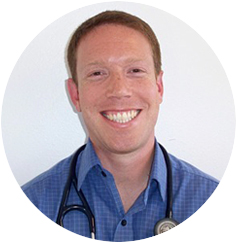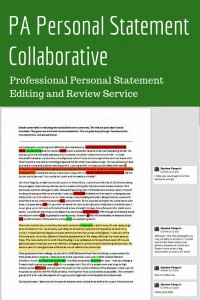
Being a physician Assistant/Associate (PA) is incredible. But there are a number of certifying bodies and critical numbers that will make this process clearer for anyone not familiar with the PA profession or trying to understand the PA marketplace and the players in it.
Here is a quick "one-pager" with links to helpful PA Life Resources at the end.
Contents:
Certifying bodies
- The Physician Assistant Education Association (PAEA) produces The PAEA program report, which is where you can find the treasure trove of data on PA school applicants and PA schools. They also produce the End of Rotation (EOR) and End of Curriculum (EOC) blueprints along with the PAEA PA School Program Directory.
- The ARC-PA is where you can find data on accredited PA programs. There are currently 300 ARC-PA accredited PA programs and several more in development.
- The APPAP is the certifying body for PA postgraduate residency programs (about 200 + programs with 1-3 students in each program)
- The National Commission on Certification of Physician Assistants (NCCPA) is the only certifying organization for PAs in the United States and produces the Physician Assistant National Certification Exam (PANCE), the Physician Assistant Recertification Exam (PANRE and PANRE-LA), and Specialty Certificates (CAQs).
- The American Academy of Physician Assistants (AAPA) is the national professional society for physician associates/physician assistants and advocates and educates on behalf of all PAs and provides tools to improve PA practice and patient care.
- Chartered chapters of AAPA – based within five regions (for state chapters), five federal service areas, and two U.S. Territories – serve their members through advocacy initiatives, locally-based CME, networking opportunities, social gatherings, timely professional information, and job resources.
- The Physician Assistant History Society, Inc., is dedicated to the history and legacy of the physician assistant profession through the identification and collection of appropriate papers, manuscripts, magazine and newspaper clippings, newsletters, reports, dissertations, oral histories, and visual artifacts, such as films, slides, videos, photographs, and digital images.
- Each country has its only newly minted PA certifying bodies, which is actively growing. The PA Hx Society offers a nice timeline.
PA Journals and Forums
- Journal of the American Academy of Physician Assistants (JAAPA) – A clinical, peer-reviewed journal published monthly by AAPA
- News Central – An online resource featuring breaking medical news and commentary relevant to you.
- The Journal of PA Education is dedicated to advancing physician assistant (PA) education by publishing ethically produced, scholarly manuscripts germane to PA educators and by providing a forum for the sharing of ideas and innovations that will enhance the education of PA students.
- PA Forum: An active forum for PAs, PA students, and those interested in the profession. Engage in discussions, seek advice, and network with peers.
Recommended Reading:
Practicing PA Data
| Characteristic | Data |
|---|---|
| Number of certified physician assistants | 168,318 (May 2022) |
| Median annual salary | $121,530 per year, $58.43 per hour (as of May 2023). The percentage earning over $200,000 has increased to 3.9%. |
| Average student loans debt | The average student loan debt for PAs is $112,500 |
| Highest-paying specialty | Anesthesiology |
| Lowest-paying specialty | Pediatrics |
| States with the most certified physician assistants | California, New York, Texas, Florida, North Carolina |
| States with the highest concentration of certified physician assistants per 100,000 population | Connecticut, New York, North Carolina, Nebraska, Montana |
| Growth of the physician assistant profession | 28.7% between 2017 and 2021 |
| Racial/ethnic diversity | Racial/ethnic diversity has remained relatively consistent over the past 5 years. 80.3% of PAs are white, 6.5% Asian, and 3.3% Black/African American. |
| Job satisfaction | 83.6% of practicing PAs are satisfied with their job, down slightly from 84.6% in 2018. 32.2% report at least one symptom of burnout. |
| Specialty change | Out of all Board Certified PAs, half have taken advantage of their flexible role by switching to different specialties at least once. Nearly 31% of PAs have changed specialties two or more times throughout their career |
FACT: On average, PAs receive 125 credit hours of graduate education before being awarded a Master's degree. How many credit hours does it take to earn a Doctorate degree in other healthcare fields?
- Physical therapist (DPT): 118 credit hours
- Nurse Practitioner (DNP): 74 credit hours
- Psychologist (PsyD/PhD): 114 credit hours
- Occupational Therapist (DNP): 103 credit hours
- Audiologist (AUD): 120 credit hours
Source: @family_med_pa
Average PA salary by specialty:
- Cardiothoracic and vascular surgery: $143,807
- Dermatology: $136,749
- Critical care medicine: $134,027
- Neurosurgery: $131,883
- Emergency medicine: $130,689
- Orthopedic surgery: $126,640
- General surgery: $124,661
- Plastic surgery: $123,169
- Hospital medicine: $120,615
- Psychiatry: $119,416
- Pain medicine: $118,013
- Cardiology: $117,636
- Oncology: $117,394
- Occupational medicine: $117,178
- Urology: $117,007
- Geriatrics: $116,544
- Internal medicine-general practice: $113,727
- Otolaryngology: $112,803
- Family medicine/general practice: $112,074
- Neurology: $111,496
- Primary care: $111,477
Physical medicine/rehabilitation: $110,993 - Gastroenterology: $110,544
- Obstetrics and gynecology: $107,790
- Pediatrics-general: $100,392
Industries with the highest levels of employment in Physician Assistants:
| Industry | Employment | Hourly mean wage | Annual mean wage |
|---|---|---|---|
| Offices of Physicians | 76,270 | $ 58.90 | $ 122,510 |
| General Medical and Surgical Hospitals | 33,070 | $ 61.44 | $ 127,800 |
| Outpatient Care Centers | 13,560 | $ 65.89 | $ 137,040 |
| Colleges, Universities, and Professional Schools | 4,370 | $ 52.08 | $ 108,330 |
| Offices of Other Health Practitioners | 1,900 | $ 56.97 | $ 118,490 |
States with the highest employment level of Physician Assistants:
| State | Employment | Hourly mean wage | Annual mean wage |
|---|---|---|---|
| California | 15,540 | $ 69.48 | $ 144,520 |
| New York | 14,790 | $ 65.20 | $ 135,620 |
| Texas | 8,930 | $ 63.93 | $ 132,980 |
| Florida | 8,480 | $ 53.33 | $ 110,930 |
| North Carolina | 7,150 | $ 57.61 | $ 119,830 |
Top paying states for Physician Assistants:
| State | Employment | Hourly mean wage | Annual mean wage |
|---|---|---|---|
| Washington | 3,040 | $ 69.90 | $ 145,390 |
| California | 15,540 | $ 69.48 | $ 144,520 |
| Alaska | 430 | $ 69.45 | $ 144,460 |
| Connecticut | 2,820 | $ 68.89 | $ 143,280 |
| Nevada | 1,260 | $ 67.96 | $ 141,360 |
Top paying metropolitan areas for Physician Assistants:
| Metropolitan area | Employment | Hourly mean wage | Annual mean wage |
|---|---|---|---|
| San Jose-Sunnyvale-Santa Clara, CA | 720 | $ 82.87 | $ 172,370 |
| Napa, CA | 30 | $ 79.52 | $ 165,400 |
| San Francisco-Oakland-Hayward, CA | 2,120 | $ 78.11 | $ 162,480 |
| Vallejo-Fairfield, CA | 90 | $ 76.72 | $ 159,570 |
| Fairbanks, AK | 40 | $ 75.78 | $ 157,610 |
| Beaumont-Port Arthur, TX | 140 | $ 75.41 | $ 156,850 |
| Yuba City, CA | 60 | $ 74.72 | $ 155,420 |
| Leominster-Gardner, MA | 30 | $ 74.07 | $ 154,060 |
| Sacramento--Roseville--Arden-Arcade, CA | 750 | $ 73.34 | $ 152,540 |
| Santa Rosa, CA | 170 | $ 72.57 | $ 150,950 |
Distribution of PAs by Most Frequently Practiced Specialty

Three specialties accounted for almost 40% of practicing PAs: family medicine (18.4%), orthopedic surgery (10.3%), and emergency medicine (8.9%).
- Family Medicine: 18.4%
- Surgery: Orthopaedics: 10.3%
- Emergency medicine: 8.9%
- Urgent care: 6.1%
- Other: 5.0%
- Internal medicine: General: 4.3%
- Hospital medicine: 3.8%
- Dermatology: 3.3%
The distribution of PAs by specialty has been changing over time. In 2016, family medicine was the most common specialty for PAs, with 22.4% of the workforce. However, the proportion of PAs working in family medicine has declined in recent years, while the proportion working in other specialties, such as surgery and emergency medicine, has increased.
The distribution of PAs by specialty also varies by state. For example, in California, the most common specialty for PAs is emergency medicine, while in Florida, it is family medicine. This variation is likely due to factors such as the state's population demographics, the availability of healthcare resources, and the regulations governing PA practice.
Overall, the distribution of PAs by specialty is constantly evolving. As the healthcare landscape changes, so too will the demand for PAs in different areas.
PA School Applicant Data
- ~35,000 people apply to PA school in a given year.
- 8,802 of those applicants were accepted into PA school (~32% of all PA school applicants (first-time and reapplicants) were accepted into a PA program)
- Of the PA students accepted, more than two out of three (65.3%) (a.k.a. the majority) had applied to PA school previously.
- The average PA program's acceptance rate is ~20%
| Characteristic | Data |
|---|---|
| Average age of applicants | 26 years old |
| Gender distribution of applicants | 66% female, 34% male |
| Race/ethnicity distribution of applicants | 62% white, 17% Hispanic/Latino, 10% Asian, 9% Black or African American, 2% American Indian or Alaska Native, 1% Native Hawaiian or Pacific Islander, <1% other |
| Median household income of applicants | $75,000 |
| Number of PA school applicants in 2022 | 35,000 |
| Average acceptance rate for first-time applicants | 20% |
| Average acceptance rate for second-time applicants | 30% |
| Average number of schools applied to by applicants | 15 |
| Average GPA of applicants | 3.6 |
| Average science GPA of applicants | 3.5 |
| Average GRE scores of applicants (verbal/quantitative/analytical) | 153/157/160 |
| Average healthcare experience of applicants | 3,000 hours (The average matriculating PA student has between 4,000 and 5,000 hours of clinical experience prior to beginning PA school) |
| Number of US PA programs | 330 (~304 accredited) |
| Average PA program acceptance rate | 20% |
| Debt | On average, students enter PA school with $37,446 in outstanding educational loans, and $12,051 in non-educational consumer debt before accumulating additional debt related to their PA education. New PA students plan to finance an average of 84% of their PA education. |
PA Program Data
Most PA programs are 27 months and are divided into two phases (a.k.a two halves)
- The didactic phase (all the bookwork starting with anatomy, pharmacology, clinical medicine, etc.) Here is an example from a current PA program.
- The clinical phase (students are doing their core rotations (family med, emergency med, internal med, pediatrics, women's health, general surgery, etc., and elective rotations). Here is an example of the clinical phase from the same PA program.
- The most affordable PA programs tend to be at public universities for in-state students.
| Characteristic | Data |
|---|---|
| Average length of program | 27 months |
| Average class size | 40 students |
| Average cost of program | $100,000 |
| Most common types of degrees offered | Master of Physician Assistant Studies (MPAS) and Doctor of Physician Assistant Studies (DPA) |
| Required courses | Anatomy, physiology, biochemistry, pharmacology, medical ethics, clinical medicine |
| Elective courses | Public health, leadership, business, research |
| Licensure requirements | Pass the Physician Assistant National Certifying Exam (PANCE) |
| Average first-time PANCE pass rate | 92% |
| Most expensive PA programs | Duke University ($112,000), Stanford University ($112,000), University of Southern California ($119,000) |
| Cheapest PA programs | University of Wisconson ($42,000), University of North Dakota School of Medicine ($52,000), University of South Dakota ($59,020) |
| Number of US PA programs | 330 (~304 accredited) |
| Current number of current PA students | 55,000 |
Scholarships, grants, and loan repayment programs
The average student loan debt for PAs is $112,500. This is significantly higher than the average student loan debt of $57,520. PAs also have higher interest rates on their loans, which can be between 7-12%. For comparison, The average medical school graduate owes $250,990 in student loan debt.
Here's a table highlighting some common scholarships, grants, and loan repayment programs available to physician assistants (PAs). Keep in mind that availability might vary by location, institution, and other factors, so it's always wise to consult directly with the respective organizations or your educational institution's financial aid office.
| Program Name | Type | Description | Eligibility | Website |
|---|---|---|---|---|
| National Health Service Corps (NHSC) Scholarship Program | Scholarship | Covers tuition and fees and provides a living stipend. Requires a commitment to work in underserved areas for a specified time. | PA students committed to primary care in underserved areas. | NHSC |
| Physician Assistant Foundation Scholarships | Scholarship | Several scholarships are offered to PA students based on factors like financial need, academic achievement, etc. | Various eligibility criteria depending on the scholarship. | PA Foundation |
| Health Resources and Services Administration (HRSA) Loan Repayment Program | Loan Repayment | Offers significant loan repayment in exchange for working in a Health Professional Shortage Area (HPSA) for two years. | Licensed PAs working in a qualifying specialty and location. | HRSA |
| Indian Health Service (IHS) Loan Repayment Program | Loan Repayment | Provides loan repayment for healthcare professionals who commit to practice in health facilities serving American Indian and Alaska Native communities. | PAs who commit to practice in qualifying locations. | IHS |
| State-Specific Loan Repayment Programs | Loan Repayment | Many states have individual programs to provide loan repayment for PAs working in underserved or rural areas. | Eligibility varies by state and program. | Consult your state's health department or educational institution. |
| Federal Pell Grants | Grant | Need-based grants for undergraduate and certain post-baccalaureate programs. | Financial need, undergraduate or specific post-baccalaureate programs. | Federal Student Aid |
| Military Scholarships for PAs | Scholarship | Various branches of the military offer scholarships in return for a service commitment after graduation. | Acceptance into a PA program and commitment to military service post-graduation. | Army, Navy, Air Force |
| Albert Schweitzer Fellowship | Stipend | Stipend of up to $2,000 to PA students dedicated to serving underserved communities | See website | Schweitzer Fellowship |
| Tylenol Future Care Scholarship | Scholarship | $5,000 - $10,000 scholarships for students pursuing healthcare degrees, including PAs | See website | Tylenol Future Care Scholarship |
The International PA Marketplace
Here is a list of countries that have Physician Assistant (PA) or PA-like providers, along with links to their certifying bodies (where available):
| Country | Title | Education Requirements | Program Length | Certifying Body | Average Salary |
|---|---|---|---|---|---|
| United States | Physician Assistant | Bachelor's degree, prerequisite courses | 2-3 years | NCCPA | $115,000 |
| Canada | Physician Assistant | 2 year community college diploma | 2 years | CAPA | $95,325 |
| United Kingdom | Physician Associate | Bachelor's degree in life sciences | 2 years | FPARCP | $66,957 |
| Netherlands | Physician Assistant | Bachelor's degree | 2.5-3 years | NAPA | $65,000 |
| Liberia | Physician Assistant | Bachelor's degree | 2 years | LINPAA | $12,000 |
| India | Physician Assistant | Bachelor's degree | 3 years | IAPA | $9,600 |
| Ghana | PA Medical (Medical Assistant) | Diploma | 2 years | Ghana Physician Assistant Association | $1,800 |
| South Africa | Clinical Associate | Bachelor's degree | 3 years | PACASA | $17,000 |
| Australia | Physician Assistant | Bachelor's degree | 2 years | ASPA | $101,000 |
| Saudi Arabia | Assistant Physician | Bachelor's degree | 2 years | Saudi Commission for Health Specialties | $50,000 |
| Germany | Physician Assistant | Bachelor's degree | 3 years | None | $66,000 |
| New Zealand | Physician Associate | Bachelor's degree | 2 years | Unregulated | $70,000 |
| Afghanistan | Physician Assistant | Bachelor's degree | 2 years | Afghanistan Board of Medical Specialties | $18,720 |
| Israel | Physician Assistant | Bachelor's degree | 2.5 years | Israel Ministry of Health | $50,000 |
| Bulgaria | Physician Assistant | Bachelor's degree | 3 years | Bulgarian Association of PAs | $24,000 |
| Ireland | Physician Associate | Bachelor's degree | 2 years | Irish Society of Physician Associates | $65,000 |
| Kenya | Clinical Officer | Diploma | 3 years | Clinical Officers Council | $7,200 |
Canada has one of the fastest-growing markets of PAs and deserves a close look: https://capa-acam.ca/. We did a whole series on the development of the PA profession internationally on The PA Life: https://www.thepalife.com/physician-assistants-pas-and-associates-around-the-world/
Emerging Trends for the PA Profession
This post touches on the tip of the iceberg of the PA profession. Compared to MDs, Nurses, and NPs, we are still a relatively new profession (started in 1969) and are still actively figuring out where we exist in the healthcare continuum.
Here are a few ongoing developments that will shape the PA profession in the years to come.
- The PA Name Change: In May 2021, the American Academy of Physician Associates (AAPA) voted to change the official title of the PA profession from "physician assistant" to "physician associate." The change came after years of research and debate, and the hiring of a healthcare marketing research and branding firm to determine the best title and marketing strategy for the profession. The AAPA House of Delegates (HOD) passed the resolution affirming "physician associate" as the official title of the PA profession by a majority vote of 198 to 68. The new title, "physician associate," directly addresses the common misperception that PAs merely "assist" physicians. The AAPA is still recommending that its members continue using the old title.
- Optimal Team Practice: Optimal Team Practice (OTP) is a policy that allows physicians, physician assistants (PAs), and other healthcare professionals to work together to provide quality care without administrative constraints. The policy was enacted by the American Academy of PAs (AAPA) in May 2017. To support Optimal Team Practice, states should: eliminate the legal requirement for a specific relationship between a PA, physician, or any other healthcare provider in order for a PA to practice to the full extent of their education, training and experience; create a separate majority-PA board to regulate PAs or add PAs and physicians who work with PAs to medical or healing arts boards; and authorize PAs to be eligible for direct payment by all public and private insurers.
- The PANRE-LA: PANRE-LA stands for PANRE Longitudinal Assessment. Launched in 2023, it's an alternative to the traditional Physician Assistant National Recertifying Examination (PANRE). PANRE-LA is a longitudinal exam that's administered quarterly over a three-year period using an "open-book" format.
One thing is for certain, though, with the advancement of new technologies (especially AI) and the ever-growing cost of delivering care to an aging population, PAs will continue to be an integral part of the healthcare environment.
Bookmark this page, as we will continue to update it regularly.
PA Life Links and Resources
- International PA Resources
- The Ultimate PA School Application Timeline
- Scholarships, Grants, and Loan Repayment Programs for Physician Assistants
- The Ultimate PA School Applicant Logbook – Track HCE, PCE, Volunteer Hours, Schools, Costs (and more!)
- Who Gets Into PA School? Here’s What You Need to Know
- How Much Money Do Physician Assistants (PAs) Make?
- PA SchoolFinder and PA Program Match
- Physician Assistant Stats















Straight out of the @family_med_pa post and @firstlineguide. I tried to find the citation here but didn’t see it.
Thanks so much Josh! I have updated the post and added the attribution with a link to @family_med_pa post. I really appreciate you bringing this to my attention.
Stephen
I like this information. It encapsulates the essential data and helps put our profession in perspective. I will print this out and give a copy to my employer, in a private practice.
Thank you for your kind words! I’m thrilled to hear that you found the guide useful and that it helped put our profession into perspective. It’s a great idea to share this information with your employer, especially in a private practice setting where understanding the role and impact of PAs can be crucial. If you or your employer have any questions or need further clarification, feel free to reach out. Let’s continue to elevate our profession together!
Have a wonderful day!🤩
Stephen Pasquini PA-C